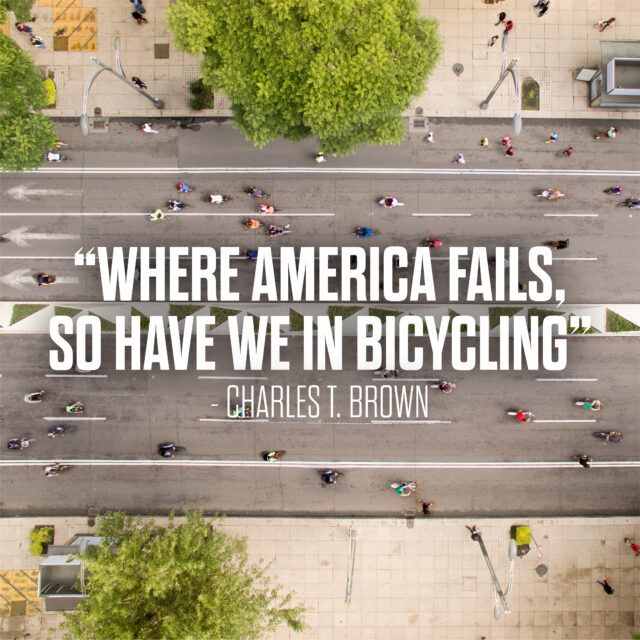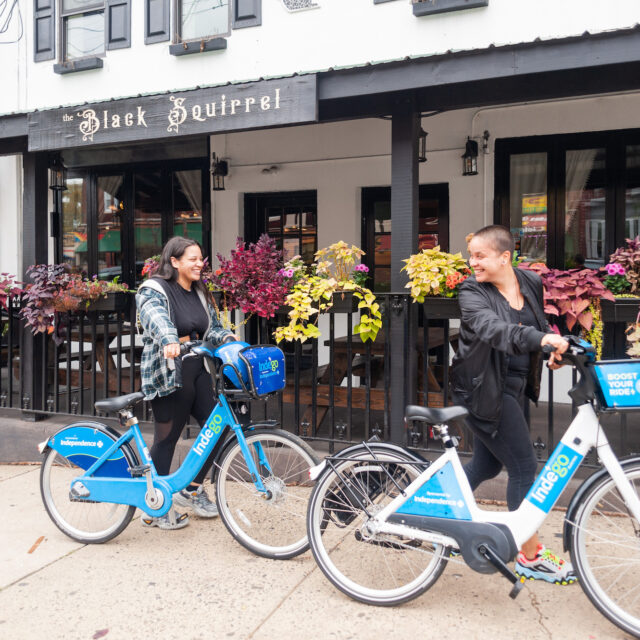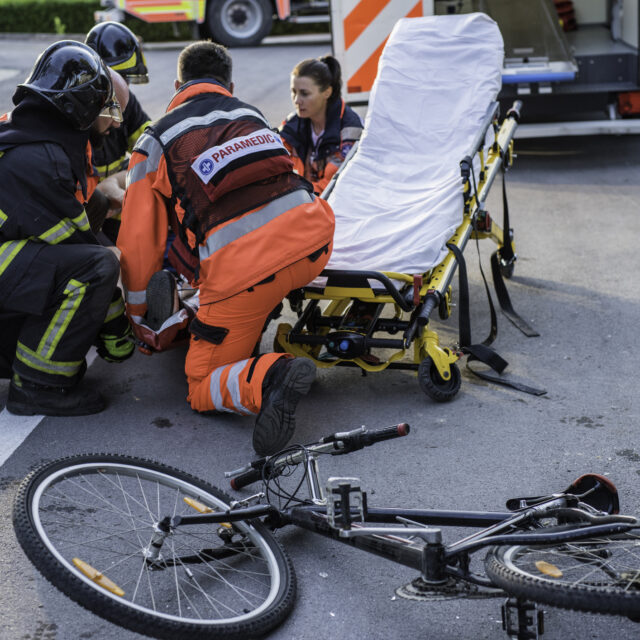Poor Infrastructure Is Holding Micromobility Back
by Kiran Herbert, Communications Manager
October 7, 2022
New studies highlight significant barriers to bicycling, including a lack of protected bike lanes, poor bike design, and negative perceptions of bicyclists.
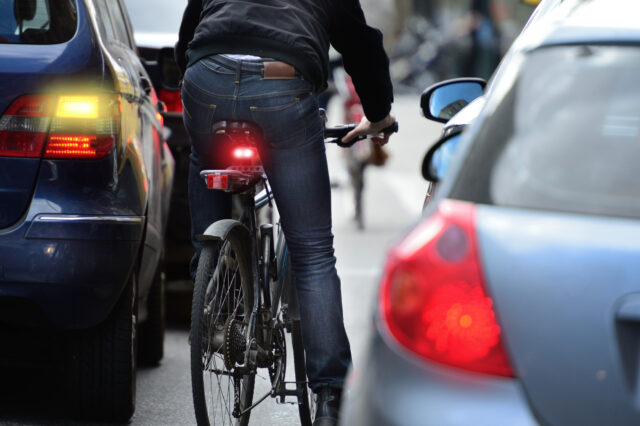
It’s been more than a year since PeopleForBikes released, “Where Do We Go From Here? Breaking Down Barriers to Bicycling in the U.S.” Done in partnership with researcher Charles T. Brown, the study used a qualitative approach to understand what was keeping people — especially low-income and BIPOC populations — from bicycling. New reports, released in the last few months from NACTO, TIER, and researchers at Monash University in Australia, have corroborated and expanded on those findings.
The NACTO working paper, entitled “Breaking the Cycle: Reevaluating the Laws that Prevent Safe & Inclusive Biking,” concludes there is little evidence that many laws regulating bicyclist equipment and behavior have substantial safety benefits. Rather, these so-called “bike laws” lead to harmful over-policing that disproportionately punishes Black, Latiné, low-income, and unhoused bike riders. The paper identifies commonly-enforced biking laws, policies, and rules and calls on policymakers to refocus them on the well-being of all road users with recommended best practices.
The report also found that historic underinvestment in bicycling infrastructure, particularly in historically underserved communities, has increased the likelihood of dangerous cycling habits, (such as riding on the sidewalk). A different survey, from the European-based, shared micromobility company TIER (Spin and nextbike are subsidiaries), examined poor infrastructure as a major barrier to micromobility take-up for Londoners. Of the Londoners surveyed, 66% of feel there are too many cars on the road and only 50% feel that cycling is easy and efficient in the capital.
From May to November 2021, the study was run a total of three times with more than 1,400 respondents each time. Speaking with Zag Daily, TIER’s Senior Corporate Communications Manager George Chamberlain confirmed, “Our research shows that a major barrier to scooting and cycling in London comes from riders feeling vulnerable sharing road space with cars and other large vehicles.” In response, the company has partnered with British routing and navigation startup Beeline to direct riders onto low-stress, safer routes. According to a poll conducted by the company, 80% of bikers feel safer using the app.
A third study, entitled “Adults’ Self-Reported Barriers and Enablers to Riding a Bike for Transport: A Systematic Review,” analyzed thousands of international studies of why people do or don’t bike and whittled the data down to 34 barriers and 12 enablers. Among the most comprehensive literature reviews ever conducted on the subject, all of the paper’s major barriers relate to riding on the road alongside motor vehicles. These include things like driver aggression, high traffic density, perceived risk of injury, and the provision and quality of cycling infrastructure.
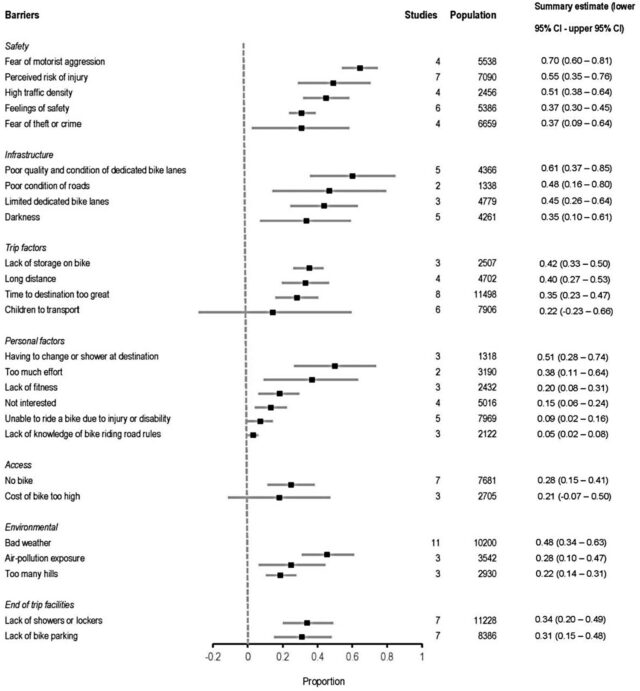
Other factors identified by researchers include personal factors such as lack of fitness or showers at rider’s destinations, trip factors such as lengthy times and distances to people’s destinations (all things e-bikes can help with), and access factors such as not having a bike or costs being too high. Notably, these are all things electric bike share systems can help with, especially those with robust low-income programs.
Despite the variety of barriers, the paper’s authors concluded that “many of the leading factors could be overcome through the provision of high-quality protected infrastructure for bike riders.” Other noted enablers of bicycling include riding a bike being seen as a fun enjoyable activity, an environmental choice, and an efficient mode of transport, all things for policymakers, advocates, and bike share marketers to take note of.
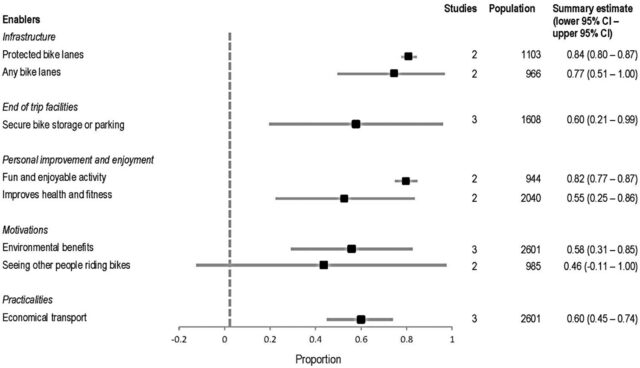
Taken altogether, these studies highlight some of the main barriers to people bicycling in our cities — and offer concrete solutions to get more people riding. Infrastructure remains one of the best investments cities can make to promote cycling, alongside other safety measures like abolishing discriminatory bike laws. More investments in bike share and low-income subsidy programs, as well as bikes designed for everyday transportation needs, are also needed.
Above all, what these studies collectively show is how necessary it is to ask people what’s holding them back, as well as what it would take to get them to ride. Only by actively engaging community members can we design environments supportive of current and potential riders, ultimately creating a community that doesn’t hesitate to bike.
The Better Bike Share Partnership is funded by The JPB Foundation as a collaboration between the City of Philadelphia, the National Association of City Transportation Officials (NACTO) and the PeopleForBikes Foundation to build equitable and replicable bike share systems. Follow us on Facebook, Twitter and Instagram or sign up for our weekly newsletter. Got a question or a story idea? Email kiran@peopleforbikes.org.

